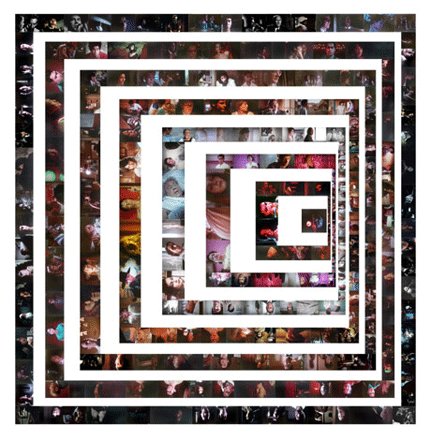Elizabeth McAlpine
dal 20/9/2006 al 27/10/2006
Segnalato da
20/9/2006
Elizabeth McAlpine
Laura Bartlett Gallery, London
White Elephant. The artist continues her inquiry into the layered nature of cultural and individual memory and the workings of sensory perception. The show includes video work, a sound installation, and sculptural and photographic pieces.

White Elephant
Laura Bartlett Gallery is pleased to announce the opening of a new
exhibition by British artist Elizabeth McAlpine.
McAlpine describes her working practice as close to geology. She
tracks the repetitions and gestures inherent in popular media,
extracting pieces of found material from its archive, and repositions
them in ways that reveal patterns and associations previously
unconsidered.
White Elephant, McAlpine's second solo exhibition at the gallery,
continues her inquiry into the layered nature of cultural and
individual memory and the workings of sensory perception. The show
includes video work, a sound installation, and sculptural and
photographic pieces, the results of McAlpine's distinctive systems of
collection and re-presentation.
In a new photographic piece, Hyena Stomp, McAlpine has taken
individual film-frames to compose a re-rendering of the minimalist
painting by Frank Stella of 1962. For her 'pigments', McAlpine has
populated the surface with single frames of actors with their eyes
closed. Interested in Stella's assertion of surface, material and
sight, McAlpine explores the seductive nature of the space between
viewer and screen, object and surface.
The idea of the gaze is further addressed in the video Blink (Lawrence
of Arabia), where McAlpine has blacked out the frames that a viewer
has blinked during the staring scene of David Lean's epic. McAlpine is
interested in the way we respond to the film editing process - a blink
is a resting point, we blink when we have understood something.
Through the presence of another's experience of viewing, we are
reminded of our own activity and become implicit in the work itself.
Quintet is a sound installation of spliced together coloured vinyl
records that, while rotating, generate the illusion of
three-dimensional dynamic objects. McAlpine's selection of records,
based purely on colour, works as an audio-collage, jumping from one
track to another at 33rpm, just as the eye jumps from spinning colour
to moving object. McAlpine has based the patterns on Duchamp's
Rotoreliefs of the 1920's, circular painted disks that rotate.
McAlpine addresses Duchamps theories of 'precision optics': the idea
that optical illusions would actually help to visualize the working
process of individual perception - but takes his question, "One can
look at seeing. Can one hear hearing?" (Duchamp 'The Green Box' 1948)
- to it's next level.
Black Noise is a wind-up gramophone that has been entirely cast and
assembled in plaster. It has the potential to play but could break if
operated. Black Noise, otherwise known as Silent Noise, describes a
sound frequency that has zero power. This mute and fragile plaster
object stands as a leveler within an exhibition that delves into a
limitless visual and aural archive: an endeavour that is not an
attempt for clarification, but more a fascination in what might be dug
up.
Elizabeth McAlpine lives and works in London. Recent exhibitions
include; A Certain Tendency in Representation at Thomas Dane, London,
Smoke and Mirrors, Midlands Art Centre, Birmingham, I Love Cinema &
Cinema Loves Me at Camden Arts Centre, London, A Bad Moon Rising at
K3, Zurich. McAlpine was also featured in the internationally touring
exhibition of British Video Art, All For Show, last year. In May this
year, McAlpine discussed her practice at the symposium Anticipating
the Past at Tate Modern.
Opening: 21st September, 6.30-8.30PM
Laura Bartlett Gallery
22 Leather Market Street - London



